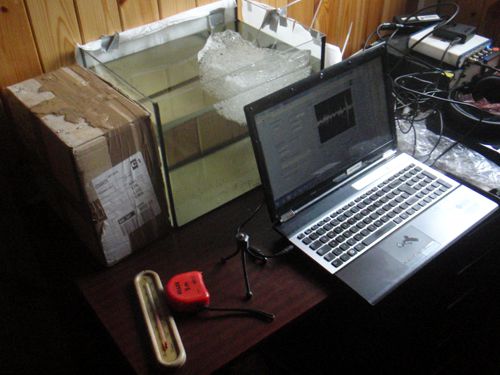After the last days, we have plenty of field data to analyse and more experiments to run and test different theories. Is the noise coming from the bubbles? From the cracking? What influences how loud it is? Is it the temperature of the air? Of the water? Of the ice itself? Does it depend on how much salt there is in the water? And how does the noise from one iceberg combine with the noise of the others to give what we measure in the field?

This makes a lot of parameters to investigate. The high-speed photography rig is used fully, day and late into the night, and we have another small tank to run tests in. The second part of our laboratory is actually in our dormitory: I annexed the desk and put a small aquarium on top. The hydrophone measuring the sound close to melting ice is connected to different bits of kit, and everything is recorded on my computer for later analyses. Melting full growlers in different conditions requires as little background noise as possible. This is not always possible in the local conditions: the station was built to be a polar base, not an underwater acoustics lab, and it is mounted on stilts (to separate from the snow and cold permafrost, in winter). This means that people walking in the corridor outside make the floor move. Doors closing too fast because of the wind do not help. But the main culprits are outside: squabbling geese or cheerful snow buntings settling just below the window.

Respond